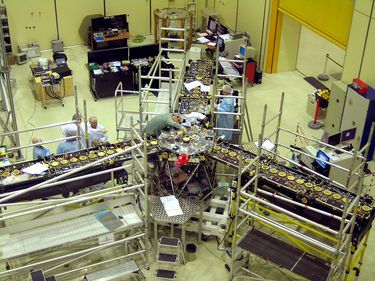The SMOS – Soil Moisture and Ocean Salinity – spacecraft was launched on 2 November 2009 as part of ESA's Living Planet Programme. Now celebrating its tenth anniversary in space, it is providing insights into Earth's water cycle and climate.
Originally meant to last up to five years, the SMOS mission has more than doubled its life in space.
The two parameters the spacecraft measures, soil moisture and ocean salinity, are of key scientific interest to better understand our planet's water cycle. Salinity has a direct influence on the circulation of water in the oceans which provokes phenomena such as El Niño or La Niña that cause flooding and droughts. The evaporation and filtration of the water in land masses depend on the degree of moisture in the soil and the vegetation water content, key aspects to understanding the hydrological cycle and monitoring the fresh water reserves on Earth.
Scientific revolution and social benefit
Manuel Martín Neira was ESA Chief Engineer responsible for the instrument payload back in 2009. Before the launch, he already anticipated future discoveries: "SMOS will herald a scientific revolution because of the unprecedented accuracy of its measurements." Alongside studying the water cycle, SMOS supports agricultural production by analysing desertification processes and the availability of fresh water, and it also establishes weather forecasting models.
Not only has SMOS accomplished these aims, but it has delivered other, originally unforeseen, scientific benefits. These include monitoring and forecasting natural disasters (for example, SMOS helped image Typhoon Hagibis which hit Japan in October); providing information on ocean acidification, sea ice and permafrost and measurements for global medium-range weather forecasts; as well as protecting food resources, for instance by predicting drought and improving crop yield in regions prone to famine.
Considering all the applications for SMOS in the past decade, it has truly fulfilled the ESA Chief Engineer's predictions, delivering important information for scientific research and measurements that are being used operationally to benefit economies and societies around the world.

